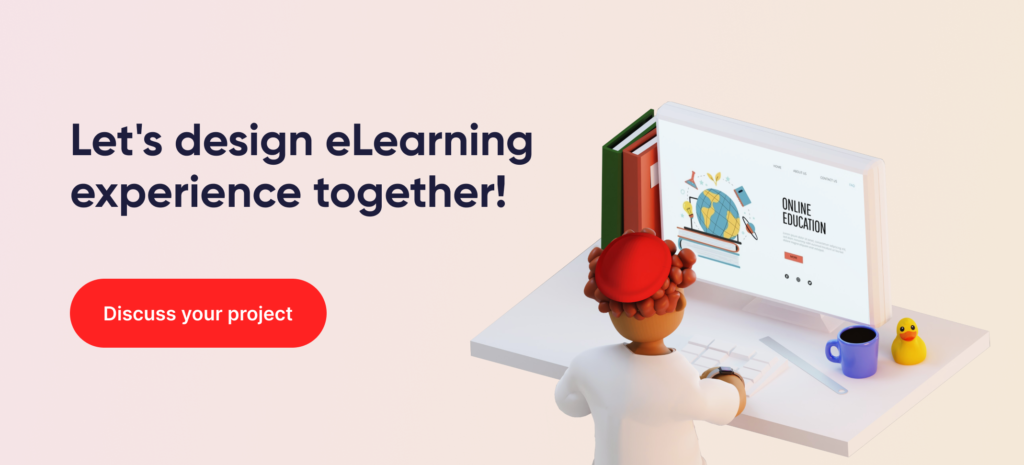Let’s start with the most obvious question – What is PropTech? The name PropTech is an amalgamation of the words “property” and “technology”, and is also commonly referred to […]
A good app doesn’t necessarily have to have a great design, nor does good design indicate that an app is superior. However, it’s true that a great app in combination with a fantastic design is most likely a winner. This is also true for elearning apps, which cover a vast variety of different topics and fields. Therefore, it’s crucial that you invest sufficient time and money into your education app design. But, what actually indicates good elearning design?
On the one hand we have the user interface, or UI, which refers to the overall look of the app. On the other, we have the user experience, or UX, which relates to the actual usability and functionality of the app. If you get the UI and UX right, your chances of success skyrocket. Alas, easier said than done. With this article, we’re going to detail the best elearning design practices, so that you can recognize the things you need to improve on.
Upon starting app development, one of the very first things you will do is research the market, thus determining your target audience, i.e. your potential users. Knowing what your customer base likes and dislikes in similar existing apps will help tremendously in the initial stages of the elearning design process. For example, here at Redvike we use the Agile development methodology, which utilizes so-called “user stories” – which help figure out the app functionalities from the point of view of the user. If you’d like to know more about how to construct user stories, you can check out our article on the topic.
So, what are some of the best elearning design practices that will keep users engaged with your app?
Learners today want individualized study content, suited to their own level and goals. For instance, by adding a survey or test before starting to use the app, you can assess the user’s interests and proficiency. Thus, you can either set the user on a suitable learning track based on the pre-assessment, or you can let the user choose their own path, perhaps offering adequate recommendations. Additionally, allowing for choices between text, audio, and video is another way in which you can offer a more personalized elearning experience.
Immersive elearning design creates dynamic and stimulating environments for learners, allowing for more meaningful and engaging learning experiences. The idea is to design a whole experience, not just content. By learning through experience, users are able to retain much more information, and will be motivated to keep coming back for more! Some examples of immersive elearning technologies are:


Another important factor in elearning design is feedback. By using progress and performance indicators throughout the course of the learning path, users get more motivated and confident in their abilities. For example, by setting up different levels and indicating how long is needed for each level to be completed, users are kept interested and focused. When reaching the end of an arbitrary level, users feel a sense of satisfaction and accomplishment which encourages them to keep using the app.
We humans are visual creatures, and we respond well to attractive visual representation. Using various colors, images, graphics, animations, and video appeals to users, especially to a younger audience (which is why knowing who your potential consumer base is essential). However, it’s also important not to oversaturate or overcomplicate the app, which can lead to cognitive load. It’s best to adopt a minimalistic approach by:
Microlearning is a concept which evolved from the need for short bursts of content meant for those with limited time or attention span, which, let’s be honest, describes most of us these days. By using smaller content chunks like short video or audio sequences, flashcards, images, or even games, users find microlearning more engaging and time-effective, but also help them retain information more efficiently! This approach also benefits developers because they are able to create microlearning platforms much faster, which therefore makes them much cheaper to make. So, by spending a relatively small amount of money, you can quickly bring the product to market and start monetizing. Finally, while it’s not suited for in-depth training or complex topics, it can give a basic overview of pretty much any subject.
It’s not only the learners who use elearning apps and platforms. Teachers everywhere have been forced to move from traditional teaching tools present in the classroom to digital platforms. In many cases these elearning platforms are completely new to them or they are simply not used to using in an educational context. Furthermore, they as educators in close communication with students can offer unique insight into the teaching process and offer ideas for useful details which could easily be overlooked by a designer or developer. Their feedback and opinions are essential – read more in our article discussing challenges of edtech development.
As you can see, elearning design requires knowledge and finesse, and the outcome can vary considerably depending on the specific educational topic and purpose. Designers can sometimes get fixated on an idea which can actually hurt the usability of the app. On the other hand, developers by themselves can’t be solely relied upon to create both a great elearning UI and UX. This is why designers should actively work with developers who have design skills and technical expertise in elearning app development respectively. The team should include researchers and marketing experts who will analyze comments from both learners and educators, which will end up defining the final features of the elearning design.
If you get stuck anywhere, don’t hesitate to contact Redvike. We have the team and tools necessary to bring your idea to life.